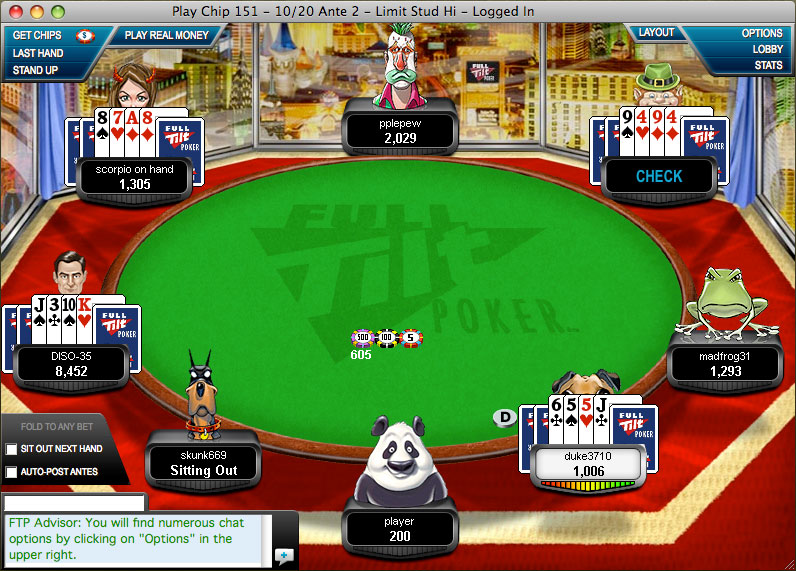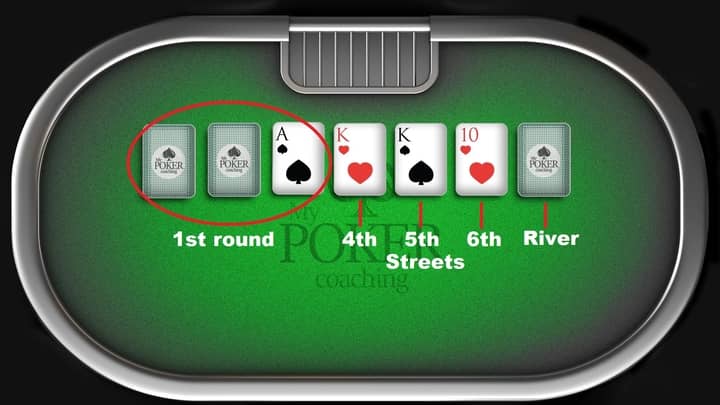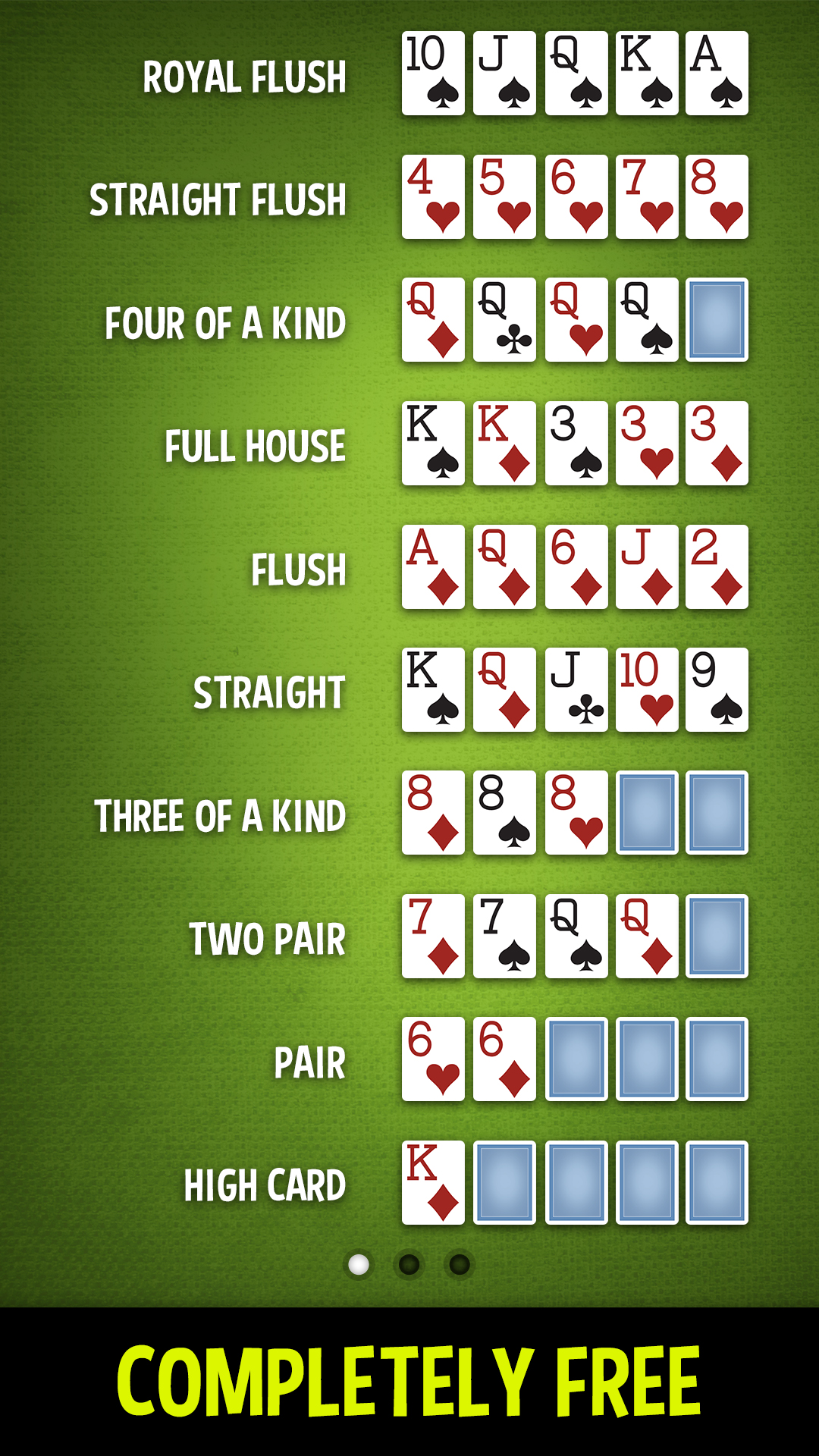7 Card Poker
Seven Card Stud Poker Strategy Tips As we have stated, seven-card stud is an intricate game, and determining the best possible play in a given situation involves numerous factors. So before we get into specifics on what hands to play and how you should play them, following are a few tips that will help you make the correct decisions. Baseball is a popular home poker variant based on seven card stud.All threes and nines are wild and fours give the player an extra card. The numbers are chosen because of their significance in the American sport - three strikes, three outs, nine innings, four balls for a walk. The Seven Card Stud format also accounts for 60% of the game rotations in a H.O.R.S.E. Brick & mortar casinos usually spread Seven Card Stud, more so in some geographical regions than others. Online poker has a healthy supply of Seven Card Stud games for all skill levels and bankrolls. Poker Games have never been better than 24/7 Poker! This is one of the classic card games you can now find on your computer! 247 Games offers a full lineup of seasonal Poker games. Click on any of the games below to play directly in your browser. All of our Poker. Like in any poker variation, starting-hand selection is extremely important in seven-card stud. Each player gets dealt a total of seven cards, of which three are dealt face down and four are dealt.

Not to be confused with Seven Card Stud, Seven Card Draw is a poker variant that closely resembles Five Card Draw. The only difference is that each player is dealt seven cards rather than five cards.
Seven Card Draw is a relatively obscure variation but it’s still occasionally found in home games. Seven Card Draw was designed to address one of the biggest complaints players have of Five Card Draw: the game doesn’t have enough big hands.
In Seven Card Draw, the players may choose any five of their seven cards to create the best five card hand possible. In this version of draw poker, you’ll see strong hands more often and generate more betting action.
Antes and Blinds
Seven Card Draw can either be played with antes or blinds. In the ante system, each player must place a small bet at the beginning of every hand. This bet is usually equal in size to 10% of the small betting limit. In a $10/$20 game, the antes would be $1.00.
Other times, players can use the same blind system that Texas Hold'em uses. In the blinds system, the player to the left of the dealer posts the small blind, which is equal in size to half the minimum bet. The player to the left of the small blind posts the big blind, which is equal in size to one minimum bet.
In a $10/$20 game, the small blind would be $5 and the big blind would be $10.
Dealer
If a full time dealer is used in the game, a small button is used to represent the dealer’s position at the table. The dealer’s button moves one seat to the left at the beginning of each hand. The purpose of this is to denote position and to ensure each player pays the blinds once per orbit.
At the beginning of each hand, the dealer deals the cards face down, one at a time, beginning with the player to the left of the dealer and going clockwise around the table until each player has seven cards.
First Betting Round
After all the cards have been dealt, the players now have a round of betting. This round begins with the player to the immediate left of the dealer. This player may call, fold, or raise. All bets in this betting round are placed in increments of the low betting limit. In a $10/$20 game, each bet and raise would be placed in increments of $10.
The action then continues clockwise around the table with each player having the same choices. If any player raises, the other players must at least match that raise to stay in the hand. The action continues clockwise until all the bets have been matched.
Draw
After the first betting round, the players may now discard up to four cards and receive new cards in exchange. Players may also “stand pat” and not draw any cards if they so choose.
Second Betting Round
The second betting round begins with the first remaining player to the left of the dealer. This time all bets are placed in increments of the high betting limit. In a $10/$20 game, all bets would now be placed in $20 increments.
The first player may bet, check, or fold and then the betting continues clockwise around the table. Once again, if any player bets or raises, each of the other players must either match that amount or fold their hands.
Showdown
Any players remaining after the last betting round now show their hands. The player with the best five card poker hand, using any combination of the seven cards in his hand, wins the pot. If there is only one player left after the last betting round, that player may take the pot without showing his hand.

Table Of Contents
Introduction
Before the start of the Texas hold'em poker boom a couple of years ago, seven-card stud was one of the most popular poker variations in the United States.
The game can be played with two to eight players, and the biggest difference between seven-card stud and Texas hold'em or Omaha is that seven-card stud does not involved a flop, and in most cases, it doesn't involve community cards at all.
Game Play
As you can see in the image above, to begin each hand a player is dealt the first two cards face down and then a third facing up. This is often called third street. The two face-down cards are called the 'hole cards' and the face-up card is called the 'door card.' Based on these three cards, one would decide whether or not to continue with the hand. Like in any poker variation, starting-hand selection is extremely important in seven-card stud.
Each player gets dealt a total of seven cards, of which three are dealt face down and four are dealt face up. From these seven cards the player has to choose his best five-card combination. The hand rankings are identical to those in Texas hold'em or Omaha; a royal flush is the best possible hand and the worst hand is the high card hand (no pair).
Antes, bring-in and betting
While the blinds are the forced bets in Texas hold'em and Omaha poker, antes are the forced bets placed by every player before receiving any cards. As an example, let's think of a $10/$20 seven-card stud game with an ante of $1 and a bring-in of $5.

Each player wanting to be dealt in to receive a hand would have to post the $1 ante, creating a pot worth competing for. The first three cards are then dealt to each player before it is determined that one player must post the bring-in. In seven-card stud, the player with the lowest-ranking door card would have to post the $5 bring-in at minimum, but this person does have the option to 'complete' the bet by posting $10 (the small limit of the game). From there, the betting continues clockwise around the table, with each player having the option to call, raise or fold. In the case that the first player who brought in only posts the bring-in, other players may have the option of completing the bet to $10 as the first raise. Once the betting is complete, every player left in the hand is dealt a fourth card, referred to as fourth street.
In games that involve a button that dictates where the action starts, those differ from seven-card stud. In seven-card stud, the first player to act from fourth street on is the player displaying the highest-ranking hand.
Before proceeding past third street, though, it is important to have solid hand selection. An example of good starting hands in seven-card stud would include the following:
Seven-card stud is most often played as a limit game. Sticking with the same example of our $10/$20 seven-card stud game, the limits of betting on third and fourth street would be the smaller limit, or $10 in this case. On fifth, sixth and seventh street, the limits increase to $20.
In the case that a player pairs his door card on fourth street, the opening player now has the option to bet double the small limit, or the larger limit. For example, if a player begins with an ace and picks up another ace on fourth street, that player may open with a bet of $20 instead of $10. This unique betting rule only takes place in the high version of seven-card stud, and not the split-pot version.
Conclusion
In seven-card stud, it is very important to pay close attention to the cards of your opponents. If you, for example, have a straight draw with K♣Q♦J♥10♠, but you already see three aces on the table, then you are only drawing to one ace and the remaining nines in the deck. If a player folded the case ace and you are unaware he or she did so, you could be incorrectly estimating your odds in the hand.
Must Have Rooms
Home to the biggest tournaments online, these rooms also have the largest player base, great bonuses, tons of action and the best software. If you don't have accounts here, you are missing out on the best that online poker has to offer.
partypokerplatinum

Up to $30 of Free Play
RATING
7 Card Poker Strategy
9.9 ★
Poker 7 Card Stud Free
Key features
7 Card Poker Stud
- Excellent mobile poker games
- Lots of free and real-money action
- One of the most trusted brands in online gaming